Automatic parameter selection¶
Smuthi offers a module to run an automated convergence test for the following parameters:
- Multipole truncation parameters l_max and m_max for each particle
- Sommerfeld integral contour parameters neff_max and neff_resolution.
- Angular resolution of far field data
Parameter selection procedure¶
The user provides:
- a simulation object
- a detector function
- a realtive tolerance
- some other numerical settings
The detector function¶
The detector function is a function defined by the user. It accepts a simulation object (one that has already been run) and returns a single quantity which we call the detector quantity. In other words, the detector function does some post processing to yield a value that we use to monitor convergence. If no function but one of the strings “extinction cross section” , “total scattering cross section” or “integrated scattered far field” is specified, the corresponding figure is used as the detector quantity. Other possible detector functions could map to the electric field at a certain point, or the scattered far field in a certain direction or whatever seems to the user to be a suitable measure for convergence of the simulation.
Parameter selection algorithm¶
The automatic parameter selection routine repeatedly runs the simulation and evaluates the detector quantity with subsequently modified numerical input parameters until the relative deviation of the detector quantity is less than the specified tolerance.
The below animation illustrates the typical graphical output during a parameter selection routine. The left panel shows the extinction cross section as a function of multipole cutoff l_max, where each line corresponds to a different Sommerfeld integral cutoff neff_max. The right panel shows the resulting converged extinction cross sections, this time as a function of Sommerfeld integral cutoff.
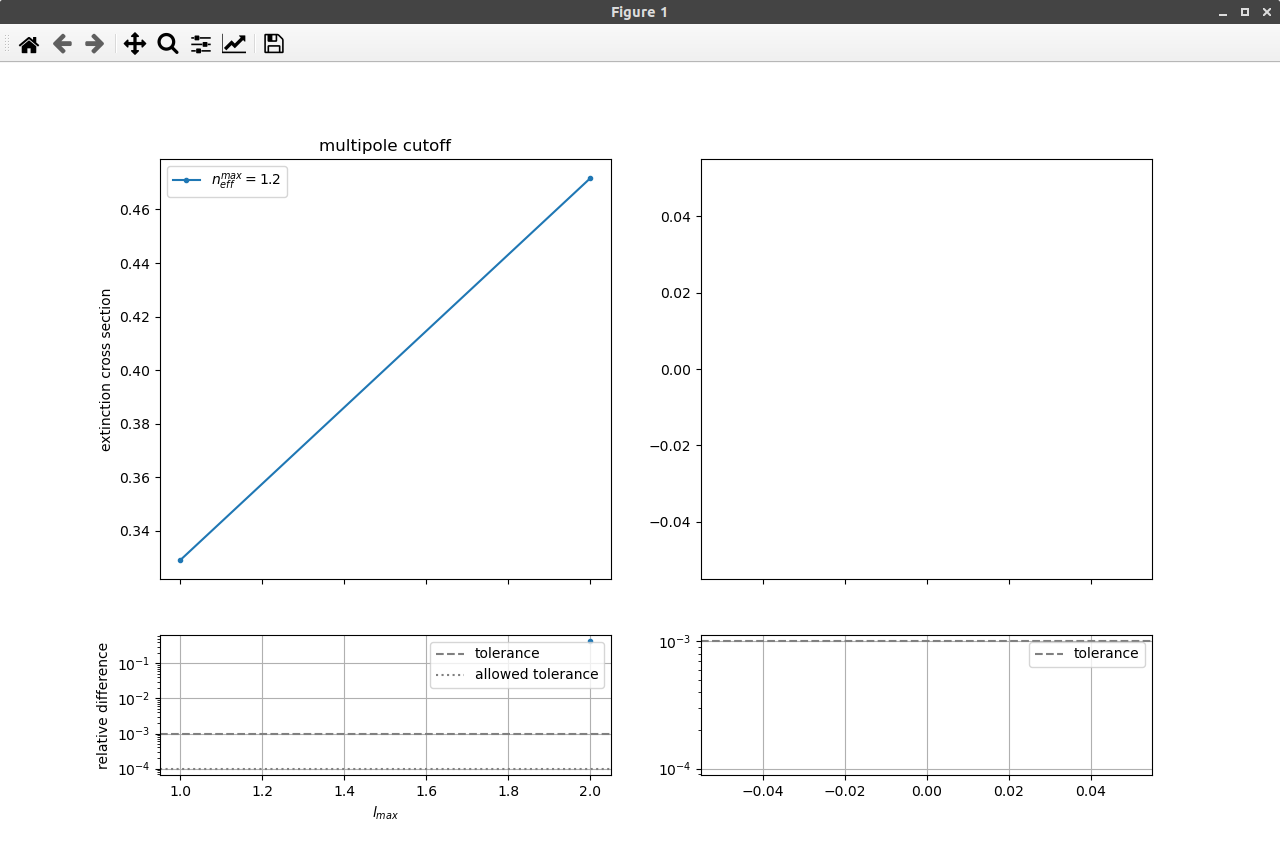
For flat particles near planar interfaces, the multipole truncation and the Sommerfeld integral truncation cannot be chosen independently, because we are dealing with a relative convergence, see [Egel et al. 2016b]. In that case, the user can set the relative_convergence flag to true (default). In that case, a convergence test for the multipole truncation parameters is triggered during each iteration of the neff_max selection routine:
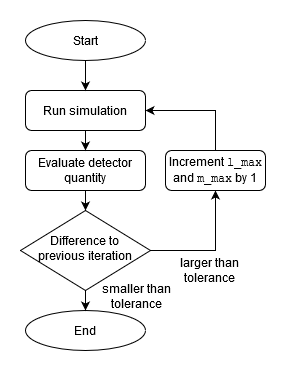
Selection of l_max |
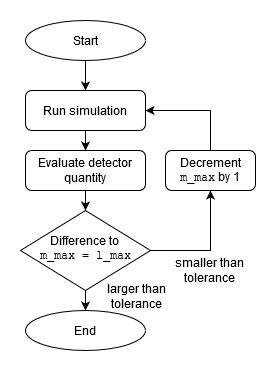
Selection of m_max |
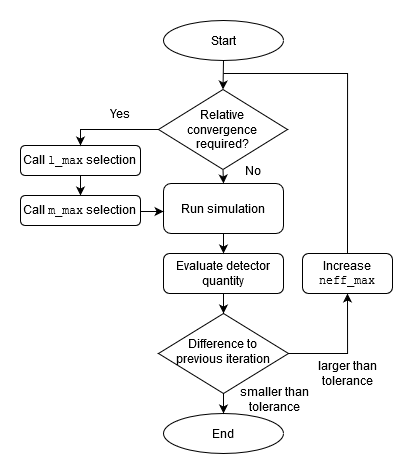
Selection of neff_max |
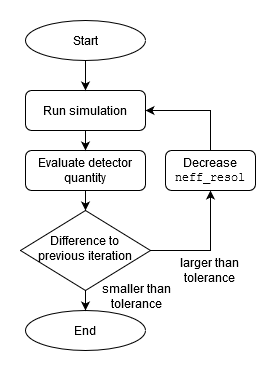
Selection of neff_resolution |
Some things to regard when using the automatic parameter selection:
- Both, the multiple scattering and the initial field contour are updated with the same parameters. A seperate optimization of the parameters for initial field and multiple scattering is currently not supported.
- The algorithm compares the detector value for subsequent simulation runs. The idea is that if the simulation results agree for different numerical input parameters, they have probably converged with regard to that parameter. However, in certain cases this assumption can be false, i.e., the simulation results agree although they have not converged. The automatic parameter selection therefore does not replace critical judging of the results by the user.
- With the parameter
tolerance_steps, the user can ask that the tolerance criterion is met multiple times in a row before the routine terminates. - The simulation is repeated multiple times, such that the automatic parameter selection takes much more time than a single simulation.
For more details, see the API documentation on the smuthi.utility.automatic_parameter_selection module.
See also the example on Automatic parameter selection.
Simulations involving many particles¶
A simulation with many particles can be busy for a considerable runtime. The above described automatic procedure might then be unpractical. In this case, we recommend a strategy of “trial ballooning”. The idea is to find a system that takes less time to simulate but that has similar requirements with regard to numerical parameters.

Let us assume that we want to simulate light scattering by one thousand identical flat nano-cylinders located on a thin film system on a substrate. Then, the selection of neff_max needs to be done with regard to the distance of the particles to the next planar interface, whereas l_max and m_max have to be chosen with regard to the particle geometry, material, and to the selected neff_max. Finally, neff_resolution needs to be chosen with regard to the layer system response. All of these characteristics have nothing to do with the fact that we are interested in a many particles system. We can thus simulate scattering by a single cylinder on the thin film system and let the automatic parameter selection module determine suitable values for l_max, m_max, neff_max and neff_resolution. These parameters are then used as input parameters for the 1000-particles simulation which we run without another call to the automatic parameter selection module.
See the example on Automatic parameter selection for an illustration of the procedure.
Note
One needs to be cautious when the many particles simulation involves large lateral distances. In that case, a finer resolution of the complex contour might be required compared to the single-particle test balloon. See the section on Resolution for details.